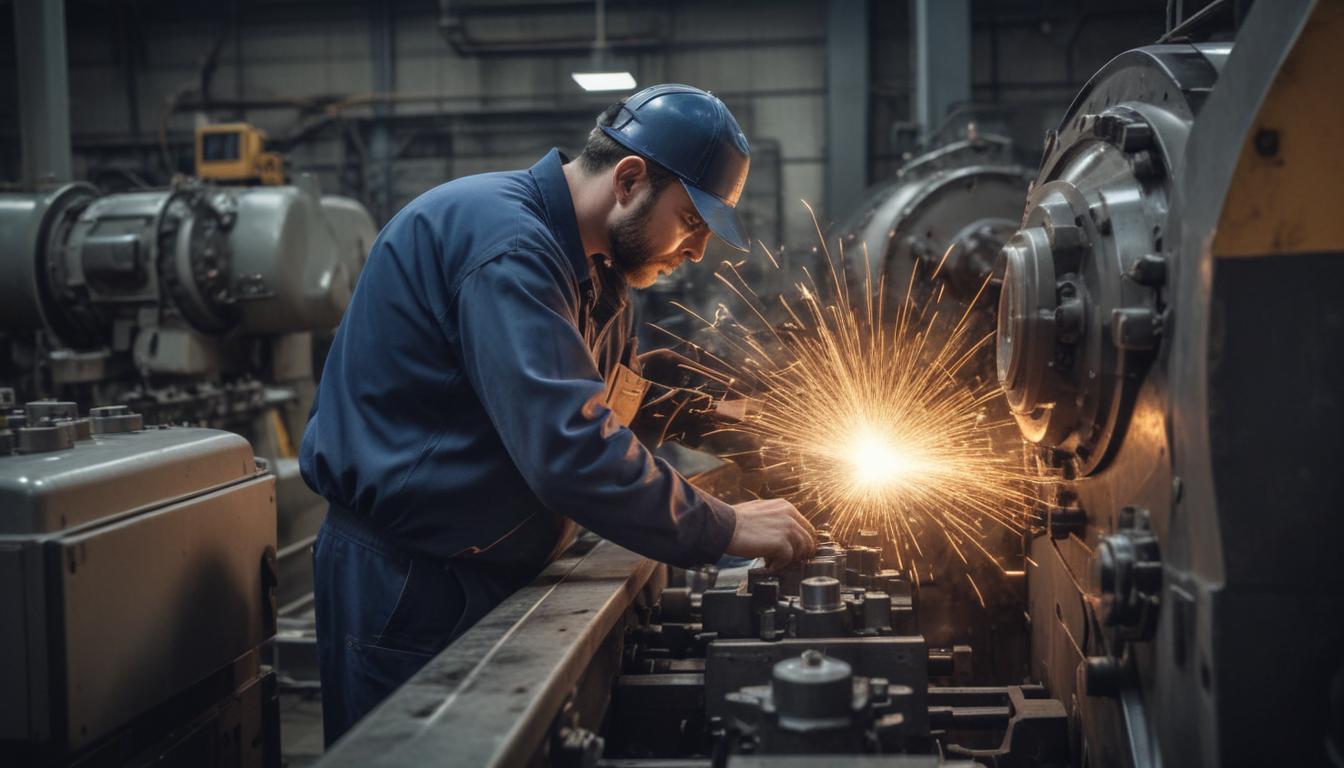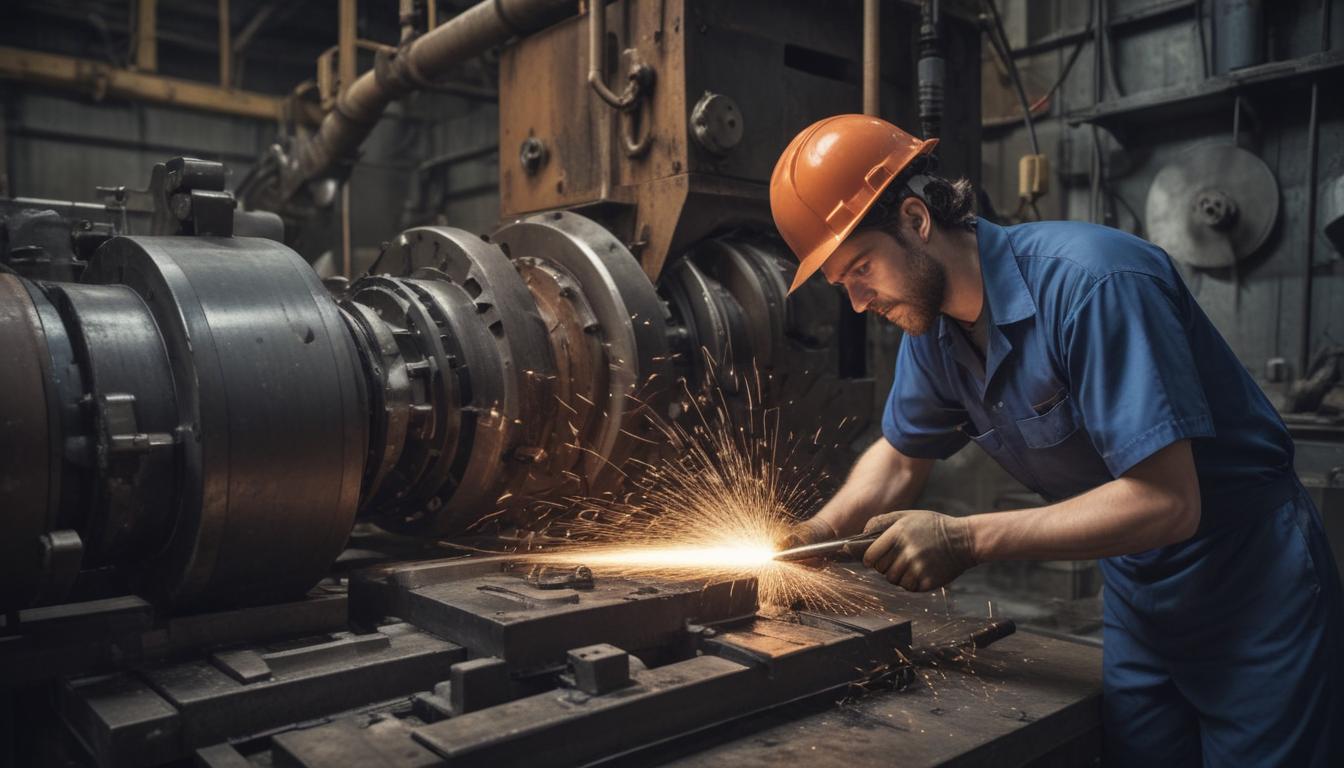Now Reading: Stop Downtime with Predictive Maintenance
- 01
Stop Downtime with Predictive Maintenance
Stop Downtime with Predictive Maintenance

Predictive Maintenance Preventing Equipment Failure
The sudden, jarring sound of a critical machine grinding to a halt is a nightmare for any operations manager. In an instant, your entire production schedule is thrown into chaos. Deadlines are missed, costs begin to skyrocket with emergency repair fees and team overtime, and customer trust starts to erode. This reactive, “run-to-failure” approach to maintenance is not just stressful; it’s an incredibly expensive and inefficient way to run a business. You are constantly putting out fires instead of focusing on growth and optimization.
But what if you could know about a potential failure weeks or even months before it happens? Imagine being able to schedule repairs during planned downtime, order parts in advance, and allocate your maintenance team’s time with surgical precision. This isn’t science fiction; it’s the reality of predictive maintenance (PdM). By harnessing the power of data, sensors, and intelligent analysis, you can shift from a reactive state of panic to a proactive position of control, transforming your maintenance strategy from a cost center into a powerful competitive advantage.
Understanding Predictive Maintenance Beyond the Buzzword
Predictive maintenance is a proactive strategy that uses data analysis tools and techniques to detect anomalies in operation and possible defects in processes and equipment so they can be fixed before they result in failure. Think of it like a modern doctor monitoring a patient’s vital signs. Instead of waiting for a heart attack to happen (reactive maintenance) or scheduling check-ups at arbitrary intervals (preventive maintenance), the doctor uses real-time data to spot warning signs and intervene early. PdM does the same for your machinery, using sensors to collect data on vibration, temperature, acoustics, and other key indicators.
This approach is fundamentally different and more intelligent than its predecessors. Reactive maintenance is the most basic form—you simply wait for something to break and then fix it, which inevitably leads to the most downtime and highest costs. Preventive maintenance is a step up, involving scheduled service based on time or usage cycles, like changing your car’s oil every 5,000 miles. While better, this often leads to unnecessary work, as parts are replaced before the end of their useful life, wasting both money and resources. Predictive maintenance represents the peak of efficiency, ensuring that maintenance is performed only when it is truly needed.

The Transformative Business Benefits of Predictive Maintenance
Implementing a predictive maintenance program is more than just a technical upgrade; it’s a strategic business decision that delivers tangible returns across your entire operation. By moving away from guesswork and toward data-driven insights, you unlock new levels of efficiency, reliability, and profitability that are impossible to achieve with older maintenance models.
Dramatically Reduce Unplanned Downtime
The most immediate and impactful benefit of PdM is the near-elimination of unexpected equipment failures. When a sensor detects a subtle change in a machine’s vibration pattern or a gradual increase in operating temperature, the system can flag it as an early indicator of a potential problem, like a bearing beginning to wear out. This gives your team an advanced warning, allowing them to schedule the repair during a planned shutdown or a slow production period.
This foresight transforms chaotic emergency repairs into orderly, planned maintenance tasks. The result is a massive increase in uptime and operational availability. Production schedules become more reliable, customer delivery dates are met consistently, and the high-pressure stress on your maintenance and operations teams is significantly reduced. You regain control over your production environment, ensuring your assets are working for you, not against you.
Optimize Maintenance Costs and Resources
Predictive maintenance puts an end to the waste inherent in traditional preventive schedules. Instead of replacing components based on a generic calendar, you replace them based on their actual condition. This “just-in-time” approach to repairs means you are not discarding perfectly good parts, leading to significant savings on spare part inventory and procurement. Your maintenance budget is spent more effectively, targeting only the issues that require attention.
Furthermore, your skilled technicians can be deployed more strategically. Instead of spending their days on routine, and often unnecessary, check-ups, they can focus their expertise on performing the specific, high-value repairs identified by the PdM system. This not only improves labor efficiency but also boosts team morale by allowing them to solve real problems. Over time, this optimization of both parts and labor leads to a substantial reduction in your overall maintenance expenditures.
How to Get Started with Predictive Maintenance
Embarking on a predictive maintenance journey may seem daunting, but it can be approached in a practical, phased manner. The key is to start small and demonstrate value quickly, rather than attempting to overhaul your entire operation overnight. Begin by identifying your most critical assets—the machinery whose failure would cause the most significant disruption and financial loss. These are your ideal candidates for a pilot program.
Once you have identified your target assets, the next step is to equip them with the right sensors to collect relevant data, such as vibration, thermal, or oil analysis sensors. This data needs to be fed into a central platform, which could be a modern Computerized Maintenance Management System (CMMS) or a specialized PdM software solution capable of analyzing the data and generating alerts. Building a successful program also requires investing in your team’s skills or partnering with an external expert who can help interpret the data and establish effective maintenance workflows. By taking these measured steps, you can build a powerful predictive maintenance program that safeguards your equipment and secures the future of your operations.


































